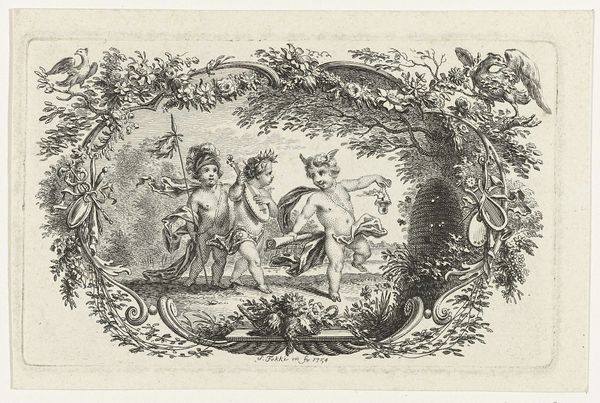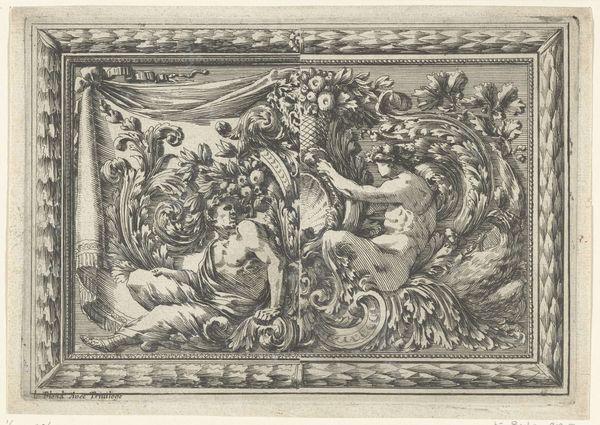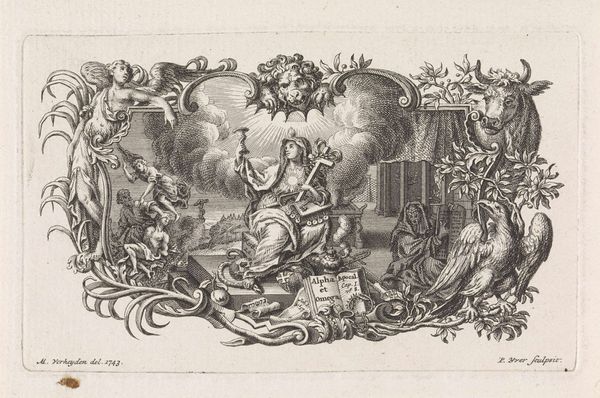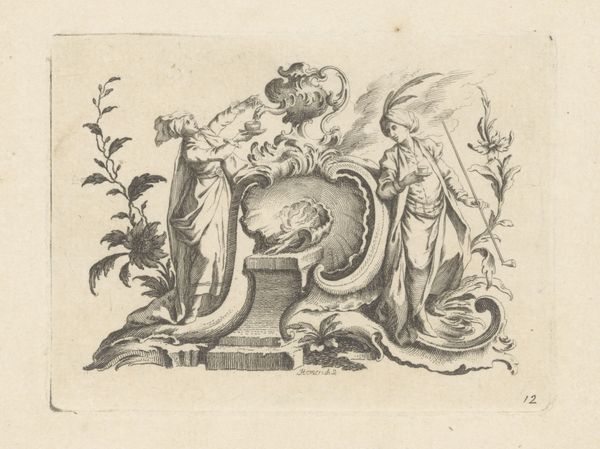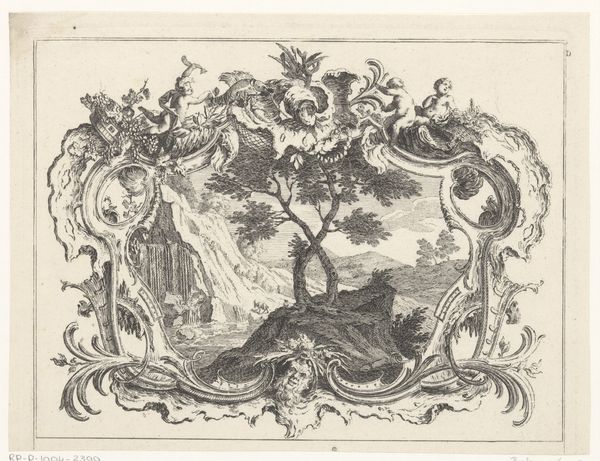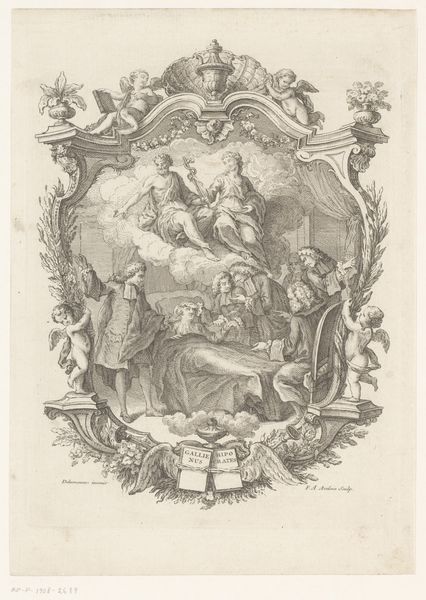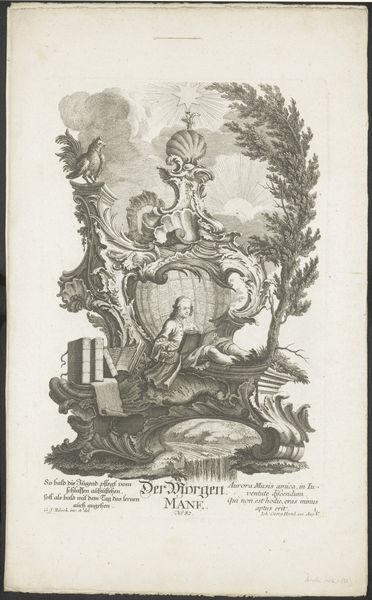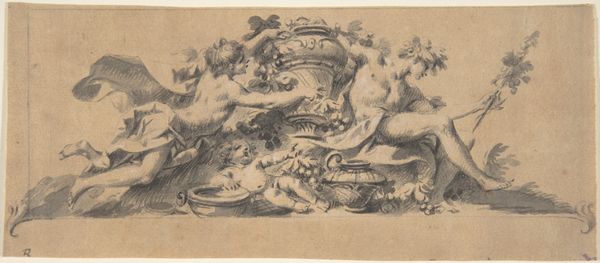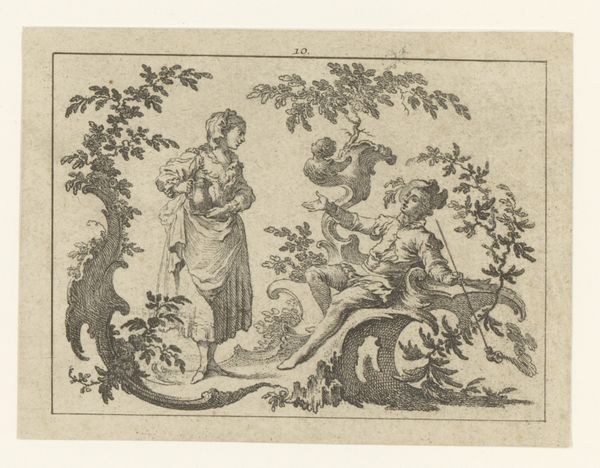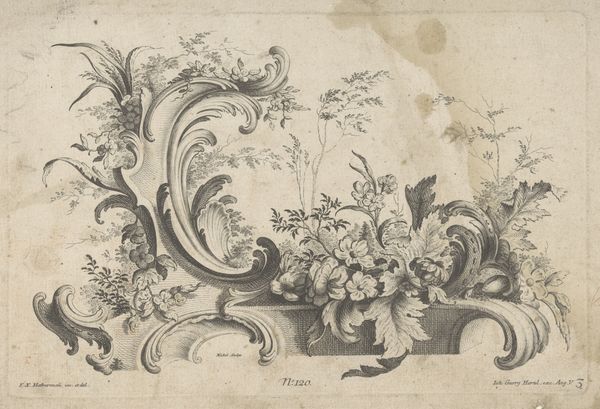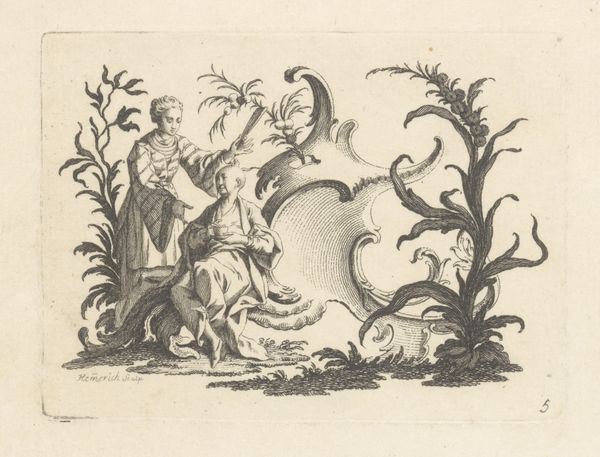
drawing, etching, ink, pen
#
drawing
#
allegory
#
pen drawing
#
pen illustration
#
pen sketch
#
etching
#
old engraving style
#
ink
#
orientalism
#
pen
#
history-painting
Dimensions: height 101 mm, width 180 mm
Copyright: Rijks Museum: Open Domain
Carel Jacob de Huyser made this etching, "Vignet met allegorie op het Midden-Oosten," in 1771. The print blends a quaint, rococo style with an allegorical view of the Middle East. It invites us to consider how European artists of the time perceived and represented distant lands. Here, the image constructs meaning through a combination of visual codes and cultural references typical of the 18th century. We see pyramids, exotic animals like camels and crocodiles, and figures dressed in what Europeans imagined to be Middle Eastern garb. This piece reflects the period's fascination with, and perhaps misinterpretation of, non-European cultures. Consider the role institutions played in shaping artistic vision. Art schools and academies of the time instilled in artists a specific aesthetic, influencing how they depicted the world. The print subtly critiques these institutions by revealing a limited, romanticized view of the Middle East, reflecting the social and political distance between Europe and the regions it depicted. To understand this artwork, you would need to dig into travel literature, colonial histories, and art criticism of the late 18th century. Ultimately, art like this reminds us that its meaning is always tied to social and institutional contexts.
Comments
No comments
Be the first to comment and join the conversation on the ultimate creative platform.
